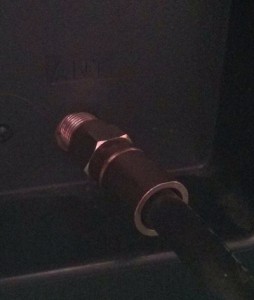Who’s Going To Crack The Cord-Cutting Conundrum?
 Monday’s NCAA men’s basketball championship cost nothing to watch on over-the-air television–or on the NCAA’s March Madness Live site. That made it a much better deal than most TV programming, and may be a sign of how we might watch more TV a few years from now.
Monday’s NCAA men’s basketball championship cost nothing to watch on over-the-air television–or on the NCAA’s March Madness Live site. That made it a much better deal than most TV programming, and may be a sign of how we might watch more TV a few years from now.
But a lot of other things will have to happen before the menu of online video options can start to match what you can get with a traditional cable or satellite multi-channel service. I was reminded anew of the scope of these obstacles at a panel discussion I led Saturday in Denver at Free Press’s National Conference for Media Reform on “cord cutting”–at which only two of the five panelists, myself and author/activist Susan Crawford, had ditched their TV subscriptions.
But our conversation also touched on a few potential turning points that could serve to ratchet open our TV-viewing options.
* What if other companies start cutting deals with Aereo?
Aereo’s system of routing over-the-air broadcasts to customers via individual antennas and Internet feeds has survived court challenges so far, and the company is getting ready to expand its service beyond New York. And recent reports have pointed to possible tie-ups between this startup and such established companies as Dish Network and AT&T, which might decide to offer Aereo as a cheaper alternate to their traditional programming lineups.
There’s a less likely possibility waiting in the wings: The Federal Communications Commission could decide that, after years of deliberation, that online-only TV providers such as Naples, Fla, Sky Angel legally qualify as multichannel video providers–which would subject them to a complicated legal regime and require them to pay retransmission fees to channels they carry but also ensure that they could not be shut out of programming altogether.
* When will a major sports league abandon regional blackouts?
Right now, watching most sports online is a frustrating experience for fans of the home team: You can watch any other city’s team online, but not your own. There are workarounds–a neighbor has used proxy-server services that give him a distant Internet Protocol address to watch Washington Nationals games for the past year or two–and they should only get easier.
So at what point do sports leagues and regional sports networks decide they’re leaving too much money on the table? The math shouldn’t be hard; all MLB.tv has to do is look at how much money somebody might spend extra on a proxy-server option to get a sense of the value apparent in watching the home team at home.
* Will small cable operators decide they’re really broadband providers?
This came up in our talk Saturday: If you’re a tiny cable operator, the economics of the business don’t work for you as they might for a Comcast or a Time Warner Cable. Your channel carriage costs look to go up and up, largely determined by the deals the big companies work out; meanwhile, broadband service represents a more predictable and profitable business. So why not let DirecTV and Dish Network take on the burden of TV programming and focus on selling Internet access? So says Public Knowledge’s senior vice president Harold Feld; it’s a prediction worth watching.
* Will big cable operators decide they need to broaden their own selection of bundles?
Verizon did an impolite thing a few months ago–it said it would tack on an extra fee to new or renewing Fios TV accounts to reflect the cost of carrying an ever-expanding menu of regional sports networks, then gave viewers the option of a cheaper bundle that doesn’t include any sports channels.
This action is best seen as a cry for help: Verizon doesn’t like seeing its TV-programming budget get jacked up every year. (Sound like anybody you know?) It points to one way that traditional video providers could address the core complaint of many cord cutters: having to pay for stuff you don’t care about to watch the things you do. They wouldn’t have to go to a full a la carte system–but they’re crazy not to offer viewers a better choice of bundles.








